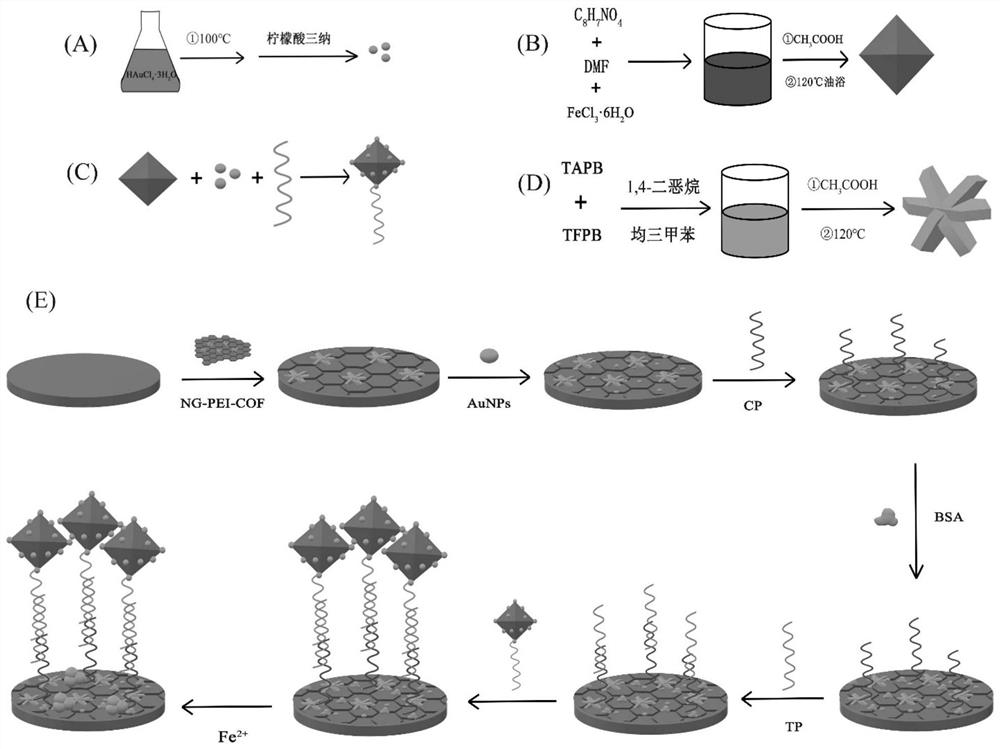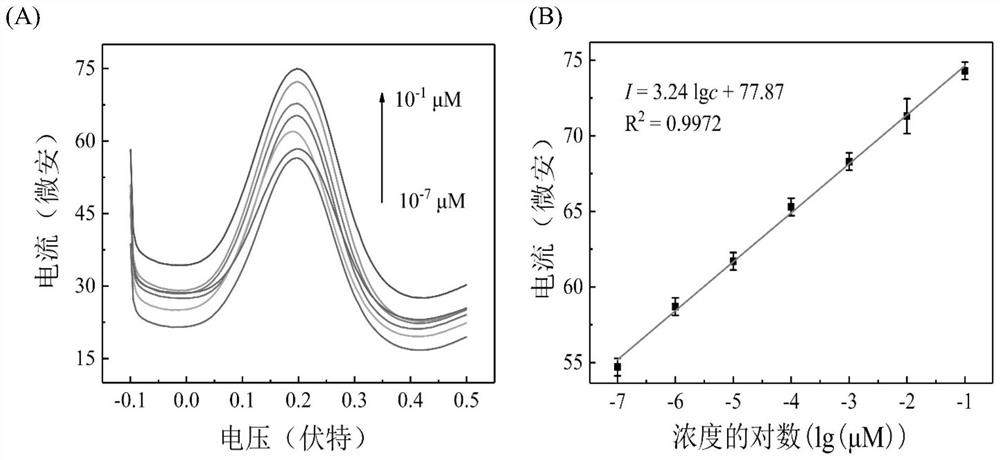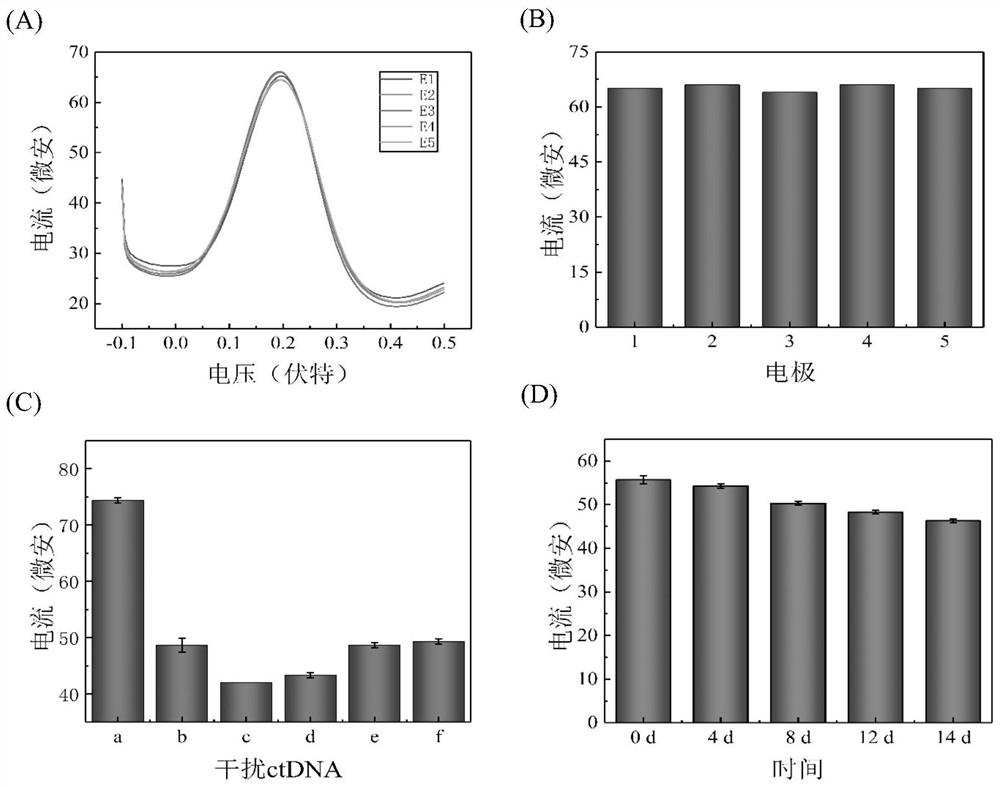Preparation method and application of electrochemical biosensor for detecting NSCLC circulating tumor gene
A biosensor and tumor gene technology, applied in the field of electrochemical DNA sensors, can solve the problems of electrochemical biosensors that have not been reported yet, and achieve the effects of improving water solubility, avoiding aggregation, and low price
- Summary
- Abstract
- Description
- Claims
- Application Information
AI Technical Summary
Problems solved by technology
Method used
Image
Examples
Embodiment 1
[0059] The construction of embodiment 1 electrochemical DNA sensor
[0060] Follow the steps below (construct the schematic diagram as figure 1 shown):
[0061] Step 1: Dissolve 1 mL of 1% HAuCl 4 Add the solution to 100mL ultrapure water and boil, then quickly add 2.5mL 1% trisodium citrate solution and continue to boil for 15 minutes. After cooling, restore the original volume to the original volume with ultrapure water to obtain a transparent wine-red solution that is gold nanoparticles (AuNPs). For the construction principle of step 1, see figure 1 Middle (A) panel.
[0062] Step 2: Dissolve 0.461mmol 2-aminoterephthalic acid in 10mL N,N-dimethylformamide, then dissolve 0.461mmol FeCl 3 ·6H 2 O was added thereto, and 2.3 mmol acetic acid was added to the mixture, cooled to room temperature in an oil bath at 120°C for 4 h, centrifuged, washed with DMF and absolute ethanol three times, and the resulting precipitate was vacuum-dried at 60°C, and finally the brown powder ...
Embodiment 2
[0077] Example 2 Detection of NSCLC circulating tumor gene (EGFR L858R) by electrochemical DNA sensor
[0078] The electrochemical DNA sensor constructed in Example 1 was used to detect the NSCLC circulating tumor gene EGFR L858R, and the following steps were followed:
[0079] (1) Drawing of standard curve:
[0080] The DNA sensor constructed in Example 1 was placed in a solution containing 1.7mM K 4 Fe(CN) 6 and 0.24M KCl in 0.1M PBS solution to measure the current value of different concentrations of ctDNA. The standard curve was drawn according to the logarithmic value of different concentrations of ctDNA and the DPV response signal. The test results showed that the two had a good linear relationship in the concentration range of 100fM-100nM, the linear correlation coefficient was 0.9972, and the detection limit was 25.7fM. For the results, see figure 2 . figure 2 In (A) is containing 1.7mM K 4 Fe(CN) 6 and 0.24mM KCl in 0.1M PBS buffer, the differential pulse volt...
PUM
| Property | Measurement | Unit |
|---|---|---|
| Size | aaaaa | aaaaa |
Abstract
Description
Claims
Application Information
 Login to View More
Login to View More - R&D Engineer
- R&D Manager
- IP Professional
- Industry Leading Data Capabilities
- Powerful AI technology
- Patent DNA Extraction
Browse by: Latest US Patents, China's latest patents, Technical Efficacy Thesaurus, Application Domain, Technology Topic, Popular Technical Reports.
© 2024 PatSnap. All rights reserved.Legal|Privacy policy|Modern Slavery Act Transparency Statement|Sitemap|About US| Contact US: help@patsnap.com










